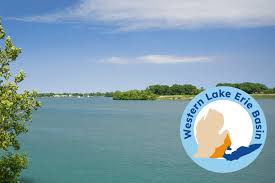MSU leads $12 million Western Lake Erie Basin performance-based conservation program
The program is funded by the Michigan Department of Agriculture and Rural Development and led at MSU by the Institute of Water Research and the Center for Regenerative Agriculture.
Michigan State University’s Institute of Water Research has recently received a $12 million investment from the Michigan Department of Agriculture and Rural Development (MDARD) to address nutrient contributions to the Western Lake Erie Basin (WLEB) in Michigan.
“We at the Institute are thrilled about this opportunity to advance impactful, science-driven solutions for a region facing persistent water quality challenges,” said Dr. Pouyan Nejadhashemi, director of the Institute of Water Research. “We also gratefully acknowledge the leadership and support of MSU AgBioResearch, whose commitment to advancing applied research has been instrumental in making this work possible.”

The WLEB has been plagued with harmful algal blooms for over a decade despite bi-national efforts to reduce nutrient inputs into the lake. To overcome this challenge, MDARD is leveraging and expanding previous work by the Institute of Water Research that maximizes nutrient reductions while minimizing costs.
“Addressing bi-national and state nutrient reduction goals in the WLEB requires a multi-tiered approach that encompasses research, monitoring and conservation implementation,” said Jeremiah Asher, project lead and assistant director of the Institute of Water Research. “New strategies are needed to overcome conservation adoption barriers, implement conservation on the landscape where it will have the greatest benefit, and deliver the greatest conservation at the lowest cost.”
The activities in this project will be led by a partnership among the MSU Institute of Water Research, the MSU Center for Regenerative Agriculture, MSU Extension, the Lenawee County Conservation District and the Alliance for the Great Lakes. Previous work in the WLEB has demonstrated success with a performance-based approach that utilizes model-based outcomes. The approach resulted in reductions of phosphorus, which were seven times more cost-effective than the traditional conservation implementation used in the River Raisin watershed.
This program will build on that approach by expanding the geographic scale and magnitude of effort, enhancing the program’s marketing through novel partnerships, incentives, and expanding the value chain of conservation outcomes and ecosystem services.
“Harmful algal blooms present a complex challenge that requires innovative partnerships and science-backed solutions,” said MDARD Director Tim Boring. “The new performance-based approach to reducing the amount of phosphorus entering Lake Erie will bolster a broader strategy that includes enhanced water quality monitoring, new investments in soil health research, and an expansion of regenerative agriculture.”
The organizations working with producers to enroll them will also be developed. These organizations will utilize a simplified online tool connected to a complex model running in the background, which will help predict the environmental benefits, such as reduced phosphorus, sediment, and runoff, resulting from various management changes in the fields. The online tool will also determine the payment amount based on the predicted phosphorus reductions and enable the producer to enter into a contract directly from the tool if they are interested.
The program will run for seven years. During the first year, the project team will work with a diverse stakeholder advisory committee to develop various aspects of the project, such as payment rates, incentives, additional project priorities, verification, and strategic visioning. In the spring of 2026, the project will start enrolling producers in the program.
To help explore more options for adopting conservation practices, the Center for Regenerative Agriculture will develop yield stability maps that identify areas in agricultural fields that are less productive and therefore less profitable. These areas may present prime opportunities for farmers to implement conservation practices, which can increase their overall profitability.
In addition, the center will also work to leverage the area’s supply chains’ interest in sustainable sourcing and look for potential financial incentives to offset any losses during transitions.
“The outcomes of this work must be quantifiable and provide compensation for participating farmers for implementation and potential losses in yield during transition,” said Dr. Jason Rowntree, co-director of the Center for Regenerative Agriculture.
Additionally, Dr. Bruno Basso, co-director of the Center for Regenerative Agriculture, will provide key expertise in digital agriculture and advanced analytics to inform and guide conservation strategies. Dr. Glenn O’Neil, information technologist at the Institute of Water Research, will lead the development and deployment of a web-based tool that integrates complex environmental models with a simple user interface for producers.
MSU Extension will play a critical role in helping communicate the benefits of soil health practices promoted in this program, while providing outreach and training related to current science on best management practices for producers in the WLEB.



 Print
Print Email
Email




